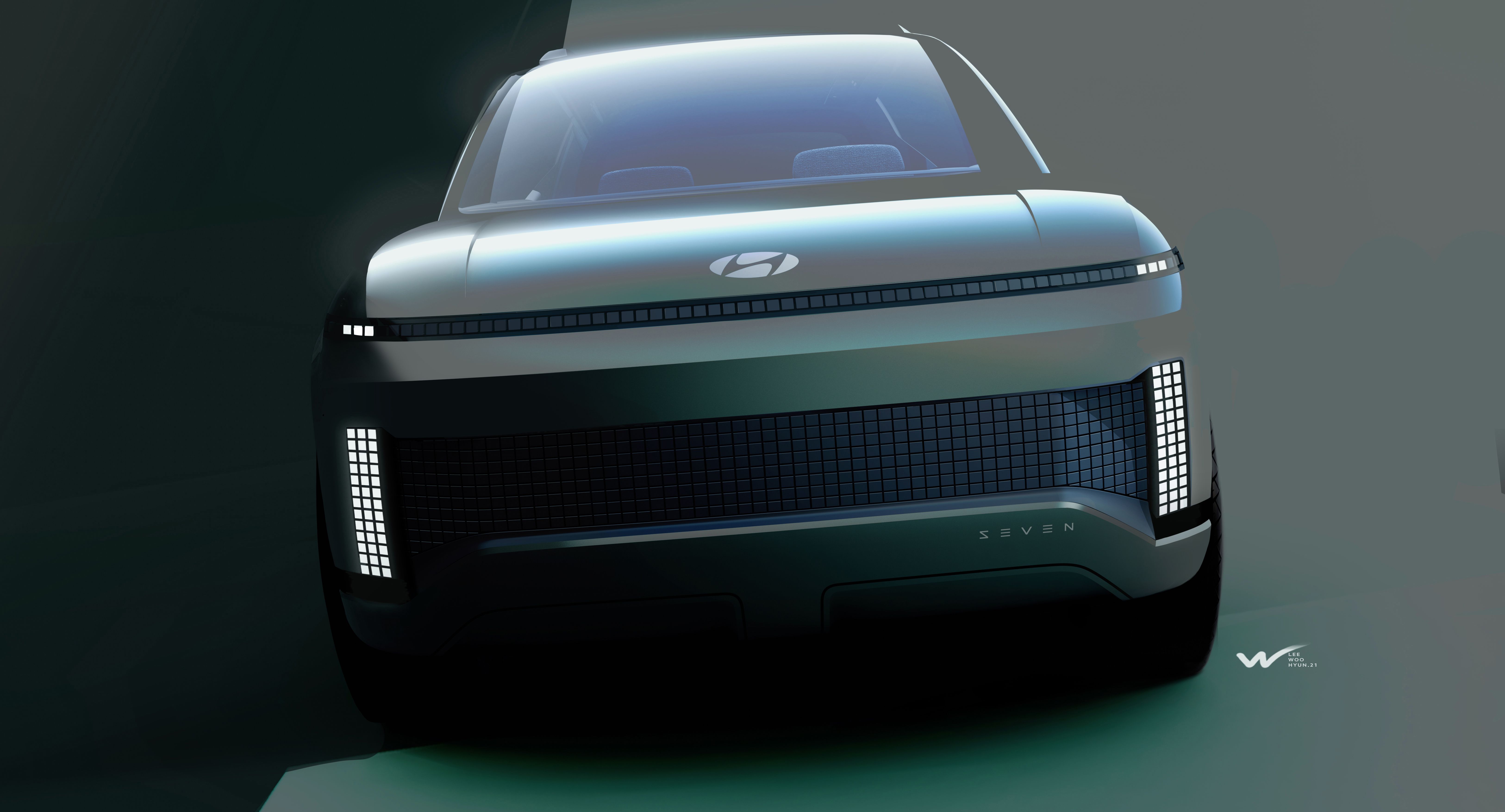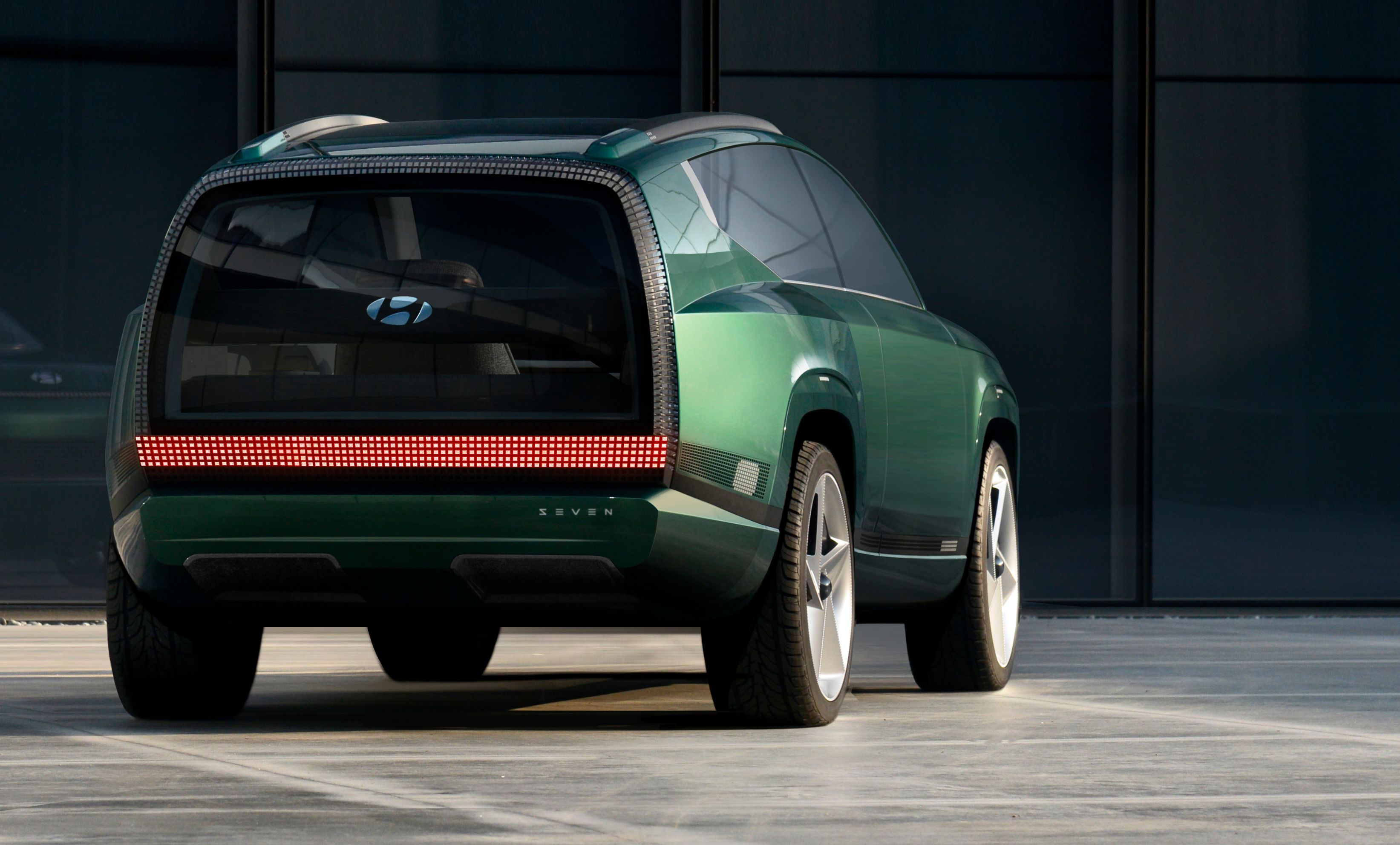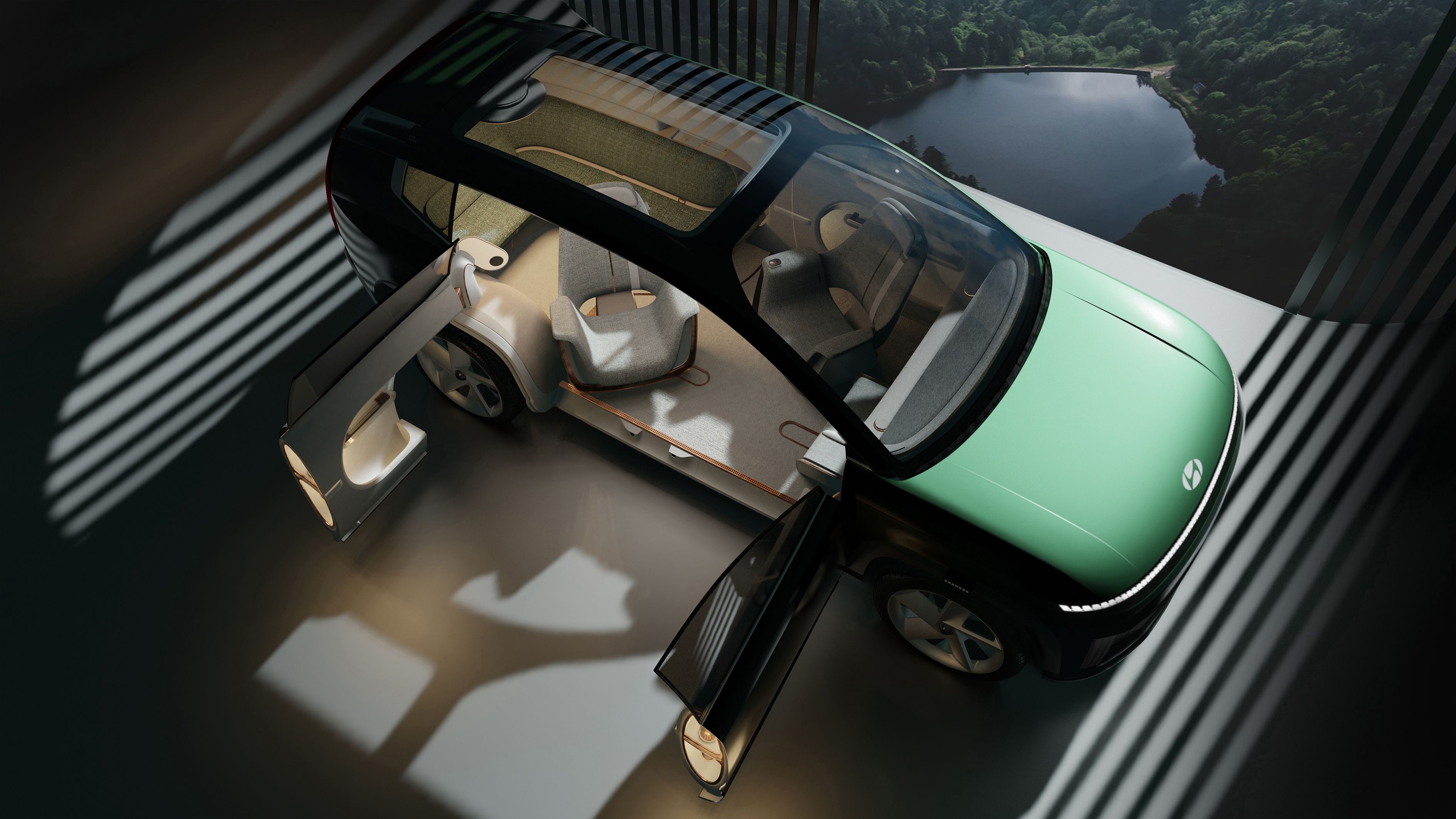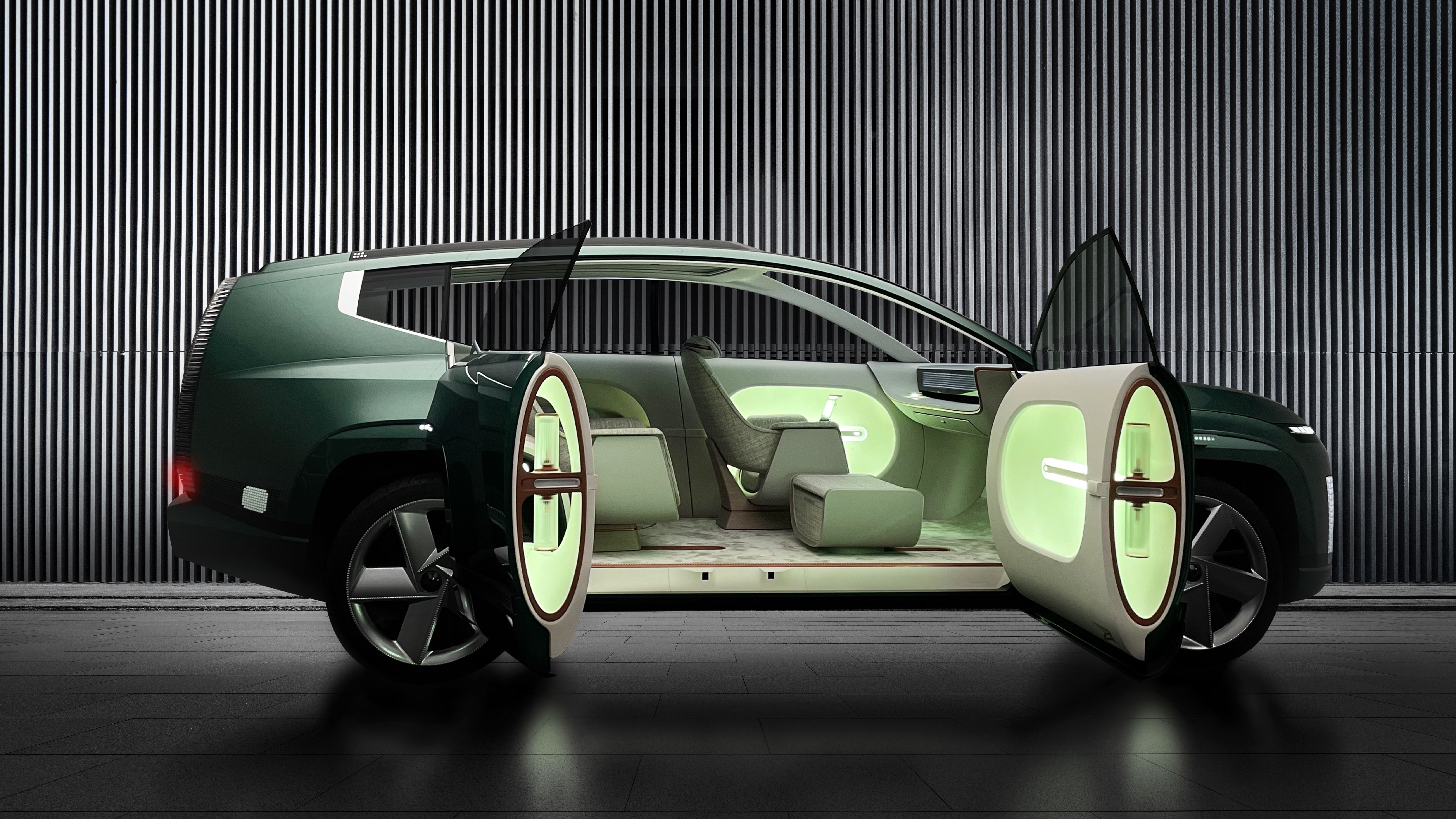Hyundai is growing its electric fleet of vehicles as fast as it can, with the 2022 Ioniq 5 poised to be a solid alternative to the Tesla Model 3 This car, and its push of the Ioniq sub-brand has proven how resilient the automotive sector is, and now the Seven Concept pushes that idea a step further. The Ioniq 5 serves as the compact hatchback\crossover and the SEVEN represents a full-size EV that Hyundai will begin marketing in the very near future.
Meet the Ioniq 7… Kind Of
This modern-looking concept known as the SEVEN gets its name from the production mode it previews, the Ioniq 7. It features modern, elegant body panels that are in the same style house as the 2019 Hyundai 45 Concept – the model that ultimately lent a significant portion of its DNA to the Ioniq 5 – and the 2020 Prophecy Concept which could ultimately spawn its own production model at some point in the near future. The front fascia benefits from the wide LED lightbar that stretches the width of the nose and the two vertical 3x18 LED fog lights in each corner. The grille that you see is clearly fake, but there’s a possibility that the production model could use this area to channel airflow for motor, battery, or brake cooling.
The rear of the SEVEN is where things get a little weird but, strangely, I really like the look. Normally, this is a design trait that I would frown at as the rear end design has absolutely nothing to do with the sleek elegance of the side profile (and it’s commanding structure) or the front end. The sloping roof looks okay from the front and rear, but in the back, you can see that it terminates into a square of a rear hatch that just looks out of place at best. The taillights and brake lights are integrated into a massive red LED stripe at the bottom of the rear hatch. It honestly almost feels like designers couldn’t get to the back of the design, so they just threw on something to closed it off. Again, I actually like the look for some silly reason, despite its odd appearance.
The SEVEN, and the future Ioniq 7, rides on Hyundai’s Electric-Global Modular Platform (E-GMP), which is the same architecture that supports the Ioniq 5, Kia EV6, and the Genesis GV60. The same 800-volt electrical system is included with this architecture, which means the future production model with support 350-kW fast charging. According to Hyundai, the SEVEN can suck in enough go-juice to take the battery from 10- to 80-percent in just 10 minutes, while range will be somewhere over 300 miles (at least 483 km).
Hyundai hasn’t given us any other performance data right now, but the SEVEN is just a concept so that isn’t really a big deal. The Ioniq 5 is offered with two drivetrain configurations. With a single motor, you’ll get 168 horsepower and 258 pound-feet of torque, while a dual-motor AWD configuration will net you 232 horsepower and 446 pound-feet of torque. Given the nature and size of the SEVEN, I’d expect on a dual-motor arrangement being offered. There should, however, be a larger battery than the Ioniq’s offering of 58-kWh or 72.6 kWh. Given the size of the SEVEN a 100-kWh battery wouldn’t be completely out of place here.
|
Power |
168 HP |
232 HP |
|---|---|---|
|
Torque |
258 LB-FT |
446 LB-FT |
Now, something that definitely won’t make it to production are the pillar-less sliding doors, but the spacious, lounge-like cabin just might outside of the oversized house-like chairs. The flat floor and extended wheelbase (126.0-inches, by the way) do lend to the belief that such a design is possible on a production model, though. You’ll be able to chose from a selection of sustainable materials like bamboo wood, mineral plaster, carpeting and interior paint – all made form renewable resources. The fabric seats are even treated with antibacterial technology and there’s a Hygiene Airflow System with UVC sterilization that features the same tech found on today’s most popular airliners.
Hyundai hasn’t said exactly when the SEVEN Concept will shift into production, but chances are that we’ll see it in the next few years.




